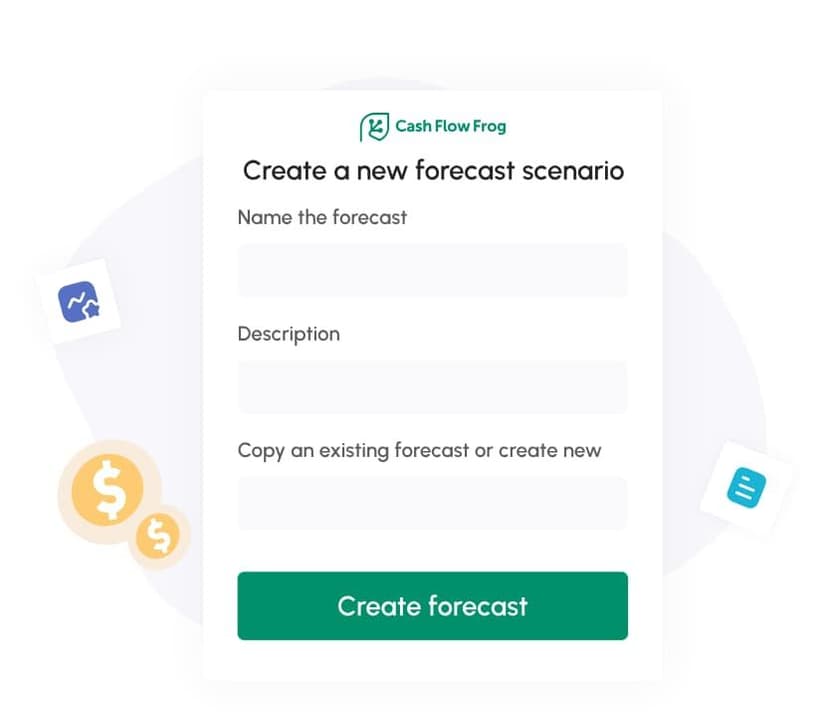10 Best Cash Flow Business Ideas: Build Income That Counts

You can look profitable on paper yet still feel broke in real life. Money flows in waves while bills march on steadily, and that mismatch kills momentum. Many have asked the same question: What are the best cash flow businesses that generate consistent profit every month?
What Defines a “High Cash Flow” Business?
High cash flow businesses bring in more money than they spend, and they do it consistently. They run on efficiency, fast billing, and low fixed costs. A good cash flow business stays healthy even in quiet months by keeping expenses light and payments quick.
These cash flow business ideas focus on liquidity, the real money you can touch, not just profits on paper.
The first turns work into instant cash, keeping the business heartbeat steady. In the end, high cash flow is all about speed over size: how fast your revenue turns into usable money.
Core Criteria to Look For When Choosing Ideas

Photo: Entrepreneurs analyzing overhead and turnover to choose the right business model - Freepik
When you’re weighing new cash flow business ideas, focus on what sets the best cash flow businesses apart from the ones that just look good on paper. The strongest models keep income steady, demand consistent, and costs under control. Together, these create true staying power, the ability to stay liquid month after month instead of chasing short-lived wins.
Low Overhead and Rapid Turnover
A good cash flow business remains lean and recovers its cash quickly, and hence, money does not roll very long. Asset-light or service-based companies, e.g., consulting, vending, or cleaning rounds, have a small inventory and recover quickly.
A freelancer can often break even after just a few projects, while a retail shop might wait months for sales to roll in. The faster your turnover, the stronger your cash position.
Quick Checklist for Lean Operations:
- Can operations run without expensive inventory?
- Can breakeven be reached within three to six months?
- Can you automate or outsource key tasks without significant expense?
Answering “yes” to at least two means the model likely fits a lean-cash-flow profile.
Recurring Revenue Streams
An easy cash flow business thrives on repeat customers who pay on schedule, no chasing, no reminders. Subscriptions, retainers, and memberships yield reliable monthly cash flow and, hence, are one of the best cash flow businesses to be stable in the long run.
Predictable income is based on recurring revenue. The loss of new sales does not empty their pockets, because loyal clients give freelancers and founders the confidence to continue their businesses even during downturns in new sales.
Subscription-based cash flow business ideas, from digital design retainers to managed-IT services, replace unpredictable one-off sales with stable monthly billing. According to Chargebee, subscription companies grow nearly 5 times faster than average small businesses, proving that recurring income compounds over time.
Scalable Without Massive New Cost
One thing that defines high cash flow businesses is the ability to grow revenue without letting costs keep pace. Software, online courses, and rental platforms shine here; one system can serve thousands with hardly any added expense. Automation and outsourcing amplify this effect, reducing reliance on full-time staff. The best models create leverage; every new sale strengthens cash reserves instead of stretching them.
10 Great Business Ideas for Strong Cash Flow

Photo: Collaboration fuels cash flow success in growing small businesses - Freepik
Let’s get practical. Here are the top 10 cash flow businesses that balance steady income with long-term stability. Each one offers cash flow ideas for small business owners who want money to show up regularly rather than all at once. Together, they illustrate how different industries, digital, rental, and service, can all produce predictable liquidity when structured correctly.
1. Subscription-Based Digital Services
These models rank among the best cash flow businesses because subscribers provide recurring revenue with minimal churn. Examples include cloud storage, digital maintenance retainers, and online productivity tools.
- Startup cost: Low, mainly software and targeted marketing.
- Breakeven: Often achieved within three months once subscriptions stabilize.
- Cash driver: Automatic monthly billing, which compounds revenue predictability over time.
2. Equipment Rental or Leasing Businesses
Leasing tangible assets generates steady income from one-time investments. Each asset earns repeatedly, making it a strong cash flow business idea.
| Asset Type | Typical ROI | Key Advantage |
|---|---|---|
| Construction tools | 4 to 6 months | Steady B2B demand |
| Office equipment | 6 to 12 months | Contracts ensure predictability |
| Event gear | Variable | Seasonal but high-margin |
Why it works: You monetize ownership multiple times while preserving the asset’s residual value.
3. Laundromats or Self-Service Models
Laundromats are easy-to-run cash flow businesses known for their reliability and minimal staffing requirements. Machines handle the labor; your role is maintenance and utilities management.
Revenue consistency comes from universal demand and cash-based transactions. With modest startup capital and local market focus, these models can achieve ROI within 12–18 months.
4. Vending / ATM Machine Operations
These stand among the best cash flow businesses for passive earners. Machines operate full-time with minimal maintenance and can turn a one-time investment into a continuous income stream. The prospective returns are attractive: snack vending machines tend to yield a 15-20 percent margin per outlet, whereas ATMs can yield between 50 cents and $3 in profits per order.
Careful selection of optimal locations, such as malls, office complexes, or even universities, can keep your machines making money 24/7. When optimizing routes, management requires minimal effort, and the owners can expand in the long run by introducing new locations.
5. Real Estate Rentals with Positive Cash Flow
Property rentals remain classic high cash flow businesses. Stable tenants and tax advantages generate monthly and long-term equity. Rentals are also an inflation hedge for many investors; as the prices of living increase, so do rents, and purchasing power remains intact. In the long term, the combination of recurring revenue and capital investment builds sustainable assets.
| Property Type | Average Net Yield | Liquidity Factor |
|---|---|---|
| Single-family homes | 6–8 % | Moderate |
| Multi-unit residential | 8–12 % | High |
| Commercial spaces | 10 %+ | Variable (lease terms) |
6. Mobile Service Businesses with Fast Billing Cycles
Mobile repair, cleaning, or detailing ventures are some of the best cash flow businesses for entrepreneurs seeking flexibility.
Cash turnover is almost immediate, since services are prepaid or billed the same day. Startup needs are minimal: a vehicle, supplies, and skill. These flexible cash flow business ideas let you generate income almost immediately after launch, making them attractive to first-time entrepreneurs seeking faster returns.
7. Niche Subscription Boxes
Creative cash flow business ideas like niche subscription boxes transform specific interests into stable, predictable income. These models serve niche communities who value curated, personalized experiences, helping reduce churn and increase loyalty. To keep your subscription box venture financially efficient, proactively manage cash cycles.
Get early inflows by pre-billing customers monthly, ahead of shipment. Bargain with wholesalers to minimize inventory charges and automate the filling process to ensure reliable delivery. Such small process enhancements help make your operations lean without sacrificing reliability and retaining customers, which are at the backbone of your stable monthly income.
8. Online Courses and Membership Sites
These are easy cash flow businesses that help experts convert knowledge into revenue. By hosting lessons or communities, you build passive-income cash-flow business models around your expertise.
Recurring subscriptions, lifetime access options, and upsells create layered income. Many course creators reach profitability after 200–300 members.
9. SaaS (Software as a Service) Business Models
SaaS is one of the top 10 cash flow businesses because it has recurring payments and scalability. The infrastructure already in place generates high-margin revenue from every new customer.
Cloud hosting costs are predictable, updates are automated, and upselling is simple. Break-even often occurs within 6–12 months, depending on niche size.
10. Maintenance & Service Contracts for Equipment
Long-term maintenance contracts remain among the best cash flow businesses. Renewals can be predicted in advance, allowing a company to remain stable year-round, particularly in B2B markets such as HVAC or IT systems.
Clients invest because downtime negatively affects their business, and reliability enables their business to be renewable without significant advertising effort.
How to Evaluate an Idea’s Cash Flow Potential
You need to test your idea to remain cash-positive before you commit your time or money to it. Question yourself: what is a good cash flow for a small business, and do you even have a model that will sustain it month after month? The solution lies in the speed of revenue collection, the margin, the percentage, and the consistency of payments.
Chart expected inflows, such as sales or subscriptions, against fixed expenses, such as rent and software. A spreadsheet can help, but a financial forecasting tool gives real-time accuracy.
To test potential, forecast projected inflows over six months. Note average payment delays and separate fixed from variable costs. Then model three scenarios: optimistic, realistic, and conservative.
For example, a café that models delayed payments will spot payroll pressure before it happens. If your model stays positive even in the conservative case, you’re building a business designed for stability.
If your cash stays positive even in the conservative scenario, your idea is financially viable. This kind of pre-launch analysis helps you validate that the concept can stay liquid before scaling.
See Your Future Cash Flow with Forecasts.
Learn more about ForecastsStartup Costs vs Cash Flow Timing: What to Expect
![]()
Photo: Tracking startup expenses to align spending with cash flow reality - Freepik
Even the best cash flow businesses hit a rough start. In the early months, money goes out fast for setup and marketing long before it starts coming back in. As growth accelerates, payroll and advertising add new pressure. Later, expansion costs can again tighten liquidity.
| Phase | Typical Duration | Primary Cash Challenge | Mitigation Tactic |
|---|---|---|---|
| Launch | 0–3 months | Up-front costs > income | Secure 3-month reserve |
| Growth | 4–12 months | Irregular inflow | Shorter billing cycles |
| Maturity | 12 + months | Scaling expenses | Automate collections & reporting |
Cost forecasting helps you understand when expenses are highest and when inflows will recover, so you can start planning for the difference rather than responding to it. Such awareness makes the sustainable best cash flow business unique compared to those unable to cover the timing gap.
Technology and Systems That Help Cash Flow Businesses Thrive
Smart automation keeps your cash flow business models efficient and accurate as you grow. The right tools cut down on errors, speed up billing, and give you instant visibility into your cash position. A strong system includes automated accounting to sync transactions, billing software to handle renewals, and financial reporting software to track trends in real time.
Integrated dashboards also allow faster responses to shortfalls, turning data into action. The result is predictable liquidity, smoother operations, and fewer financial surprises.
Scaling the Business Without Killing the Cash Flow
Growth can squeeze your cash when you scale faster than your funding allows. Many passive-income cash-flow business models fail not because of weak demand but because of poor pacing. Scaling should be guided by cash position, not optimism.
Ways to scale responsibly:
- Reinvest 20–30 percent of profit into growth: Fund marketing or upgrades only from existing earnings, not loans.
- Delay large hires until recurring revenue supports payroll: Keep overhead flexible through contractors or automation.
- Track unit economics monthly: Review acquisition cost, lifetime value, and breakeven to confirm growth adds margin, not pressure.
- Monitor liquidity dashboards: Use cash projections to foresee dips early and plan accordingly.
Sustainable scaling means every growth decision protects working capital. Keep at least two months of operating costs on hand to ensure momentum continues even when revenue slows.
Risk Factors and How to Mitigate Them

Photo: Solid planning safeguards your business cash flow - Freepik
Even high-cash-flow startups face a persistent threat that can deplete their resources. The typical culprits are seasonal slumps, late payments, and unexpected cost increases. Their detection at the initial stage ensures that prevention is implemented every day.
Top risks and solutions:
- Demand Fluctuation: Introduce other off-season services to equalize the sales cycles.
- Late Payments: Promote early payment incentives and auto-reminders.
- Unforeseen Costs: Have a 20% cushion of overhead in case of an emergency.
- Supplier Price Increases: Stabilize the input costs by negotiating the bulk or long-term contracts.
Anticipation turns risk into responsiveness, the key to staying financially agile.
Case Studies: Real Entrepreneurs, Real Cash Flow
Entrepreneurs behind the best cash flow businesses share one mindset: control over cash before growth.
Example 1: A regional equipment rental company switched to a weekly billing schedule and reduced backdue accounts by 40 percent.
Example 2: A fitness membership created a premium replacement structure, minimized decline to less than 5 percent, and increased life-value by 30 percent in one year.
Example 3: A catering business had gone too far, then got back on its feet by reducing the payable days and restoring reserves.
These stories prove that structure matters more than scale. When applied strategically, cash flow business ideas convert recurring income into financial independence.
Ready to Take Control of Your Cash Flow?
Start FreeYour High-Cash-Flow Business Blueprint
To recap, selecting among the best cash flow businesses starts with scalability, lean expenses, and clear financial visibility.
Blueprint summary:
- Choose a low-overhead, recurring-revenue model: Prioritize operations that convert effort directly into cash inflow, such as subscription services or rental assets. The smaller your fixed costs, the faster profits compound.
- Test cash flow using forecasts before launch: Use realistic scenarios to see how your liquidity behaves under stress. This turns planning into measurable insight.
- Implement automation early to sustain accuracy: Automated billing, expense tracking, and financial reporting remove human error and keep inflows visible. Precise data leads to faster and smarter decisions.
- Maintain a three-month reserve for stability: Holding at least one fiscal quarter of expenses protects you from seasonal or payment-delay shocks, allowing steady growth even when income slows.
Cash flow isn’t luck. It’s rhythm, structure, and control. Once you find your beat, your business moves in sync. Research shows that companies that monitor cash weekly are about 60 percent more likely to remain profitable year-round. With the right tools and planning, you can build a business that pays you steadily and scales smartly.
Power Up Your Small Business Cash Flow. Explore Cash Flow Frog for Small Business.
Explore now
Your Guide To Financial Metrics And KPIs
Read more

Cash Flow Forecasting Template
Read more

10 Cash Management Trends for 2026
Read more

Direct vs Indirect Cash Flow - Which Method Fits Your Business Better?
Read more

Best Practices for Cash Flow Forecasting That Actually Work
Read more

How to Evaluate Cash Flow Metrics That Actually Matter
Read more
FAQ
Trusted by thousands of business owners
Start Free Trial Now